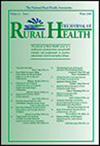A multilevel analysis of changing telehealth availability in opioid use disorder treatment settings: Conditional effects of rurality, the number and types of medication for opioid use disorder available, and time, US, 2016–2023
Abstract
Purpose
The opioid overdose crisis requires strengthening treatment systems with innovative technologies. How people use telehealth for opioid use disorder (OUD) is evolving and differs in rural versus urban areas, as telehealth is emerging as a local resource and complementary option to in-person treatment. We assessed changing trends in telehealth and medication for OUD (MOUD) and pinpoint locations of low telehealth and MOUD access.
Methods
We used national data from the Mental health and Addiction Treatment Tracking Repository (2016-2023) to identify specialty outpatient SUD treatment facilities in the United States (N = 83,988). We modeled the availability of telehealth using multilevel multivariable logistic regression, adjusting for covariates. We included a 3-way interaction to test for conditional effects of rurality, the number of MOUD medication types dispensed, and year. We included two random effects to account for clustering within counties and states.
Findings
We identified 495 facilities that offered both telehealth and all three MOUD medication types (methadone, buprenorphine, naltrexone) in 2023, clustered in the eastern United States. We identified a statistically significant 3-way interaction (p < 0.0001), indicating that telehealth in facilities that did not offer MOUD shifted from more telehealth in rural facilities in earlier years to more telehealth in urban facilities in later years.
Conclusions
Treatment facilities that offer both telehealth and all three MOUD medication types may improve access for hard-to-reach populations. We stress the importance of continued health system strengthening and technological resources in vulnerable rural communities, while acknowledging a changing landscape of increased OUD incidence and MOUD demand in urban communities.

 求助内容:
求助内容: 应助结果提醒方式:
应助结果提醒方式:


